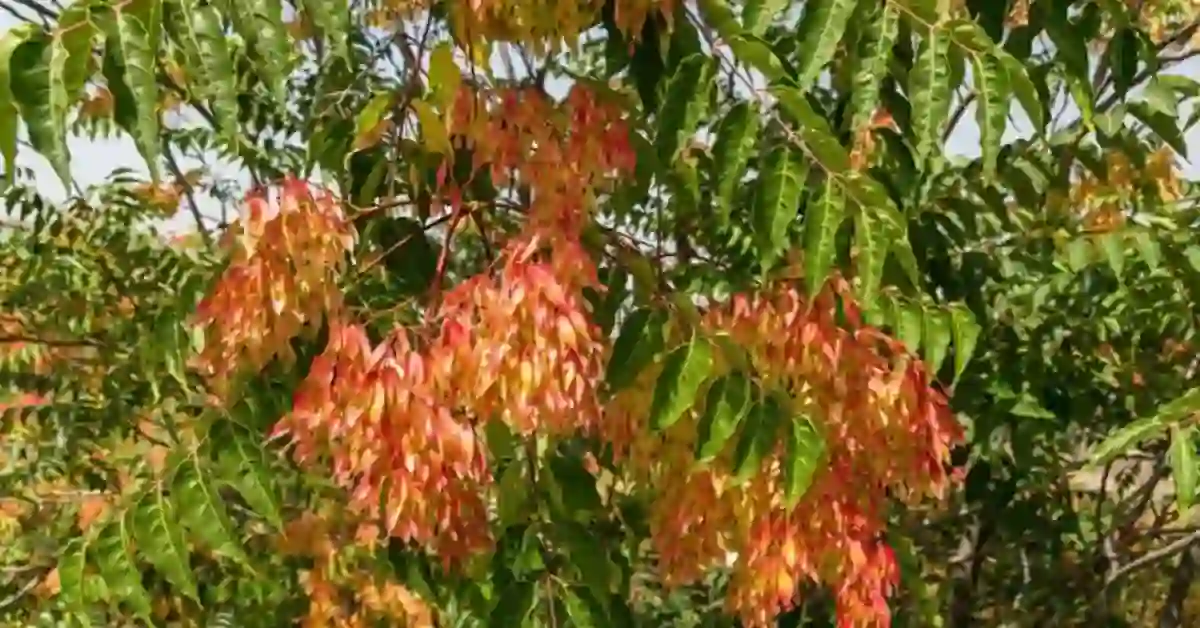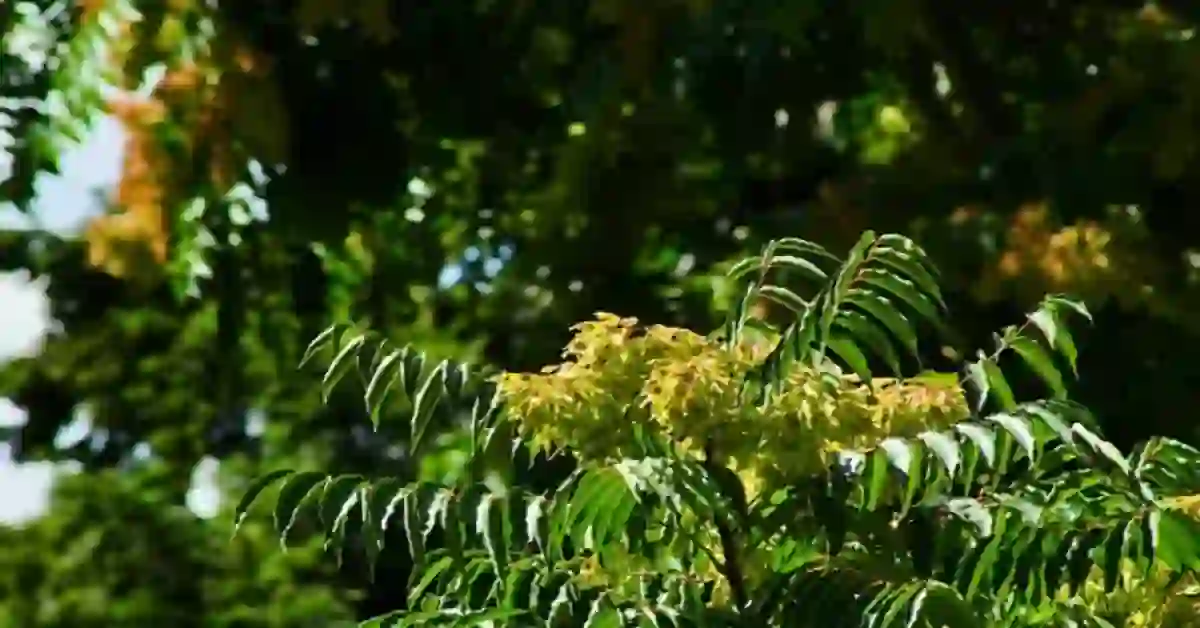Tree of Heaven (Ailanthus altissima) is native to China, but today it has become a widespread tree species in India and North America. This giant tree grows very fast and destroys the plants around it. The ailanthus began to be planted in other countries around the world in the late 1700s, and today this tree has become quite popular all over the world. Ailanthus excelsa (Roxb) tree releases an offensive odor from its flowers, due to which it is also called the stinking tree.
Table of Contents
Ailanthus identification
Alanthus tree is very huge, usually, it is 60 to 80 feet high. It is also called a soft tree. Its leaves combined are 2-3 feet long. The leaves of Ailanthus have serrated edges and oblique bases. Alanthus flowers are yellow-green.

Ailanthus tree removal
First of all the Alanthus tree should be treated with herbicide, then a gap of at least 30 days should be given, then the process of Alanthus tree removal should be carried out.
Herbicides containing glyphosate or triclopyr can be used to treat Ailanthus trees. Glyphosate is very effective in controlling Ailanthus tree removal.
Read Also: Almond Cow Milk Maker Machine, Plant-Based Milk Maker
Tree of Heaven herbicide
The best method to control the Tree of Heaven is to apply herbicide to the bark, leaves, or frill girdles of the tree. While using herbicide, the height of the tree, diameter of the trunk, and number of trees should also be taken into consideration.
It is most effective to apply all herbicide treatments in or after mid-July. Some herbicide applications such as cut stump herbicide promote root sucking, so this is not recommended without follow-up treatment.
Ailanthus seeds
Pollination in the ailanthus tree starts in the month of March-April (spring season), and bunches of mahanimb seeds start ripening in the autumn season i.e. September-October. Its seeds are very thin which spread with the wind, that is why its ripe fruits are plucked before they can fly.

The color of ripe fruits is reddish brown or yellow. Ailanthus seeds should always be dried in the shade because their viability is very low. Its maximum seed production comes from trees that are on average 12 to 20 years old.
The average number of ailanthus seeds per kilogram can range from 27000 to 33000. Its germination rate ranges from 65 to 85 percent on average. The seeds should always be dried in the shade and stored in sealed containers.
Ailanthus wood
Being an evergreen rainforest tree, the wood of the Tree of Heaven is very hard, heavy, and sandy. Its wood is mainly used for making plywood and matchsticks. In India, its wood is called Mahanib wood.
The density of ailanthus wood is very low, due to which light construction works like sword sheaths, decorative items, etc. are made from it.
Read Also: Dr Biswaroop 4th Gear Diet Chart Diabetes HBP | The Blue Zone People Diet
Ailanthus common name
In the common name of ailanthus includes :
- Common Name – Indian Tree of Heaven, Coromandel Ailanto
- English – Ailanthus
- Botanical Name – Ailanthus excelsa (Roxb)
- Hindi – महानिंब (Mahanimb) महारूख (Maharukh), Asan
- Marathi – Marukh Mahrukh
- Tamil – Agal, Perumaram, Perumaruntu
- Malayalam – Mattipongilyam, Peru
- Telugu – Pedda, Peddamandu, Peddamanu
- Kannada – Bende, Dodabevu, Doddamara
- Oriya – Mundayigatch
- Sanskrit – Aralu, Araluka, Araluvrksa
Ailanthus Altissima Parts Used
The leaf and bark of Mahanimbh is used as medicine.
Read Also: DIP Diet Protocol
Ailanthus Altissima Chemical Constituents
Chemical constituents found in its bark
- Glaucarubin
- Glauca rubinone
- Excelsin
- Glaucarubol
- Ailanthion
- Ail antic acid
- Malanthin
- Tricontane
- Hexatricontane
Chemical constituents found in its leaves
- Ailantic Acid
- Beta-Sitosterol (Vitexin)
Ailanthus Altissima Taste
The taste of the bark and leaves of Coromandel Ailanto is bitter astringent.
Ailanthus Altissima Actions
Tree of Heaven actions includes:
- Bitter Tonic
- Astringent
- Antipyretic
- Antispasmodic
- Stomachic
- Anthelmintic
Ailanthus altissima medicinal use
Tree of Heaven medicinal use includes:
- Dyscrasia
- Malaria
- Asthma
- Bronchitis
- Dyspepsia
- Burning
- Sensation giardiasis ulcerative colitis
- Dysentery
- Locally Appliedon ulcers
- Goiter swelling
- Erysipalous








